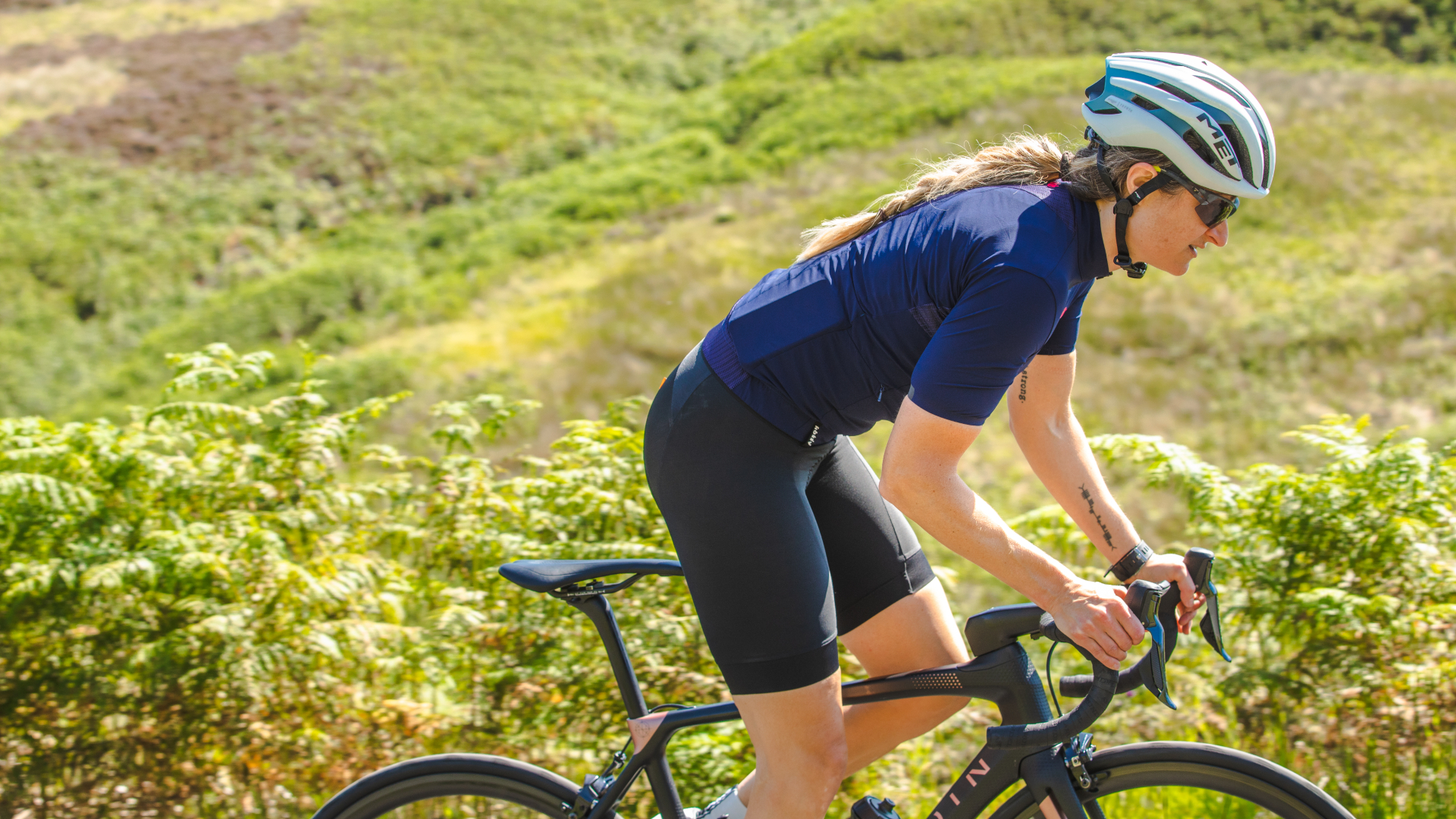Best waterproof cycling jackets 2025: Tried and tested models that'll keep you dry
A good quality cycling rain jacket will make biking in wet weather that little bit more bearable

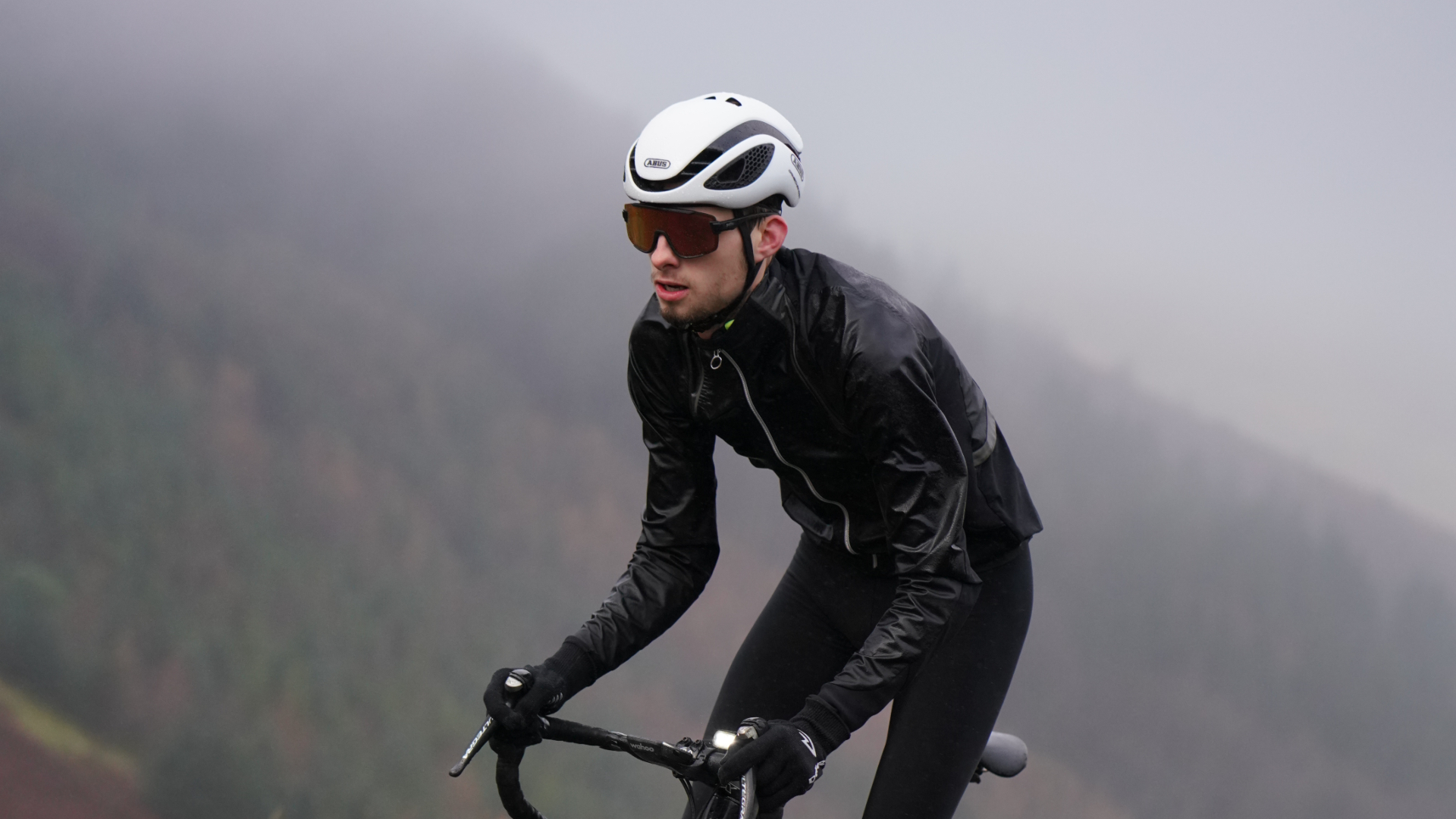
If you spend any time on a bike, you are very likely to experience rain, especially in the UK or the Pacific Northwest of America, where much of the Cycling Weekly team is based. Getting wet and cold on a bike is no fun at all, especially if you are a long way from home, so investing in one of the best waterproof cycling jackets should be high on the priority list for most bikers' wardrobes.
As cyclists, we ask quite a lot of our waterproof clothing; it must protect us from the rain, allow moisture vapour to escape so we don’t get damp, and it needs to pack up small enough for a jersey pocket when not in use.
Even with the drive to reduce environmentally harmful PFAS (polyfluoroalkyl substances), which have rendered many older jacket styles obsolete, and us asking the question, do jackets need to get worse before they get better? - There is still a bewildering number of options when it comes to the best cycling rain jackets. You have the best packable rain jackets, the best winter cycling jackets, the best commuter jackets, the list goes on—most claim to be waterproof and breathable, despite significant disparities in price.
Furthermore, while the fabric is a crucial part of the garment’s performance, even the best material won’t make a good cycling jacket if the cut is wrong. Therefore, cycling-specific clothing or a jacket that suits your body and riding style is imperative to the overall performance of your coat of choice.
Which is why we have awarded the MAAP Atmost Rain Jacket as our best overall, thanks to its superior waterproofing, lightweight and packable design that still offers a great fit and comfort.
The Quick List
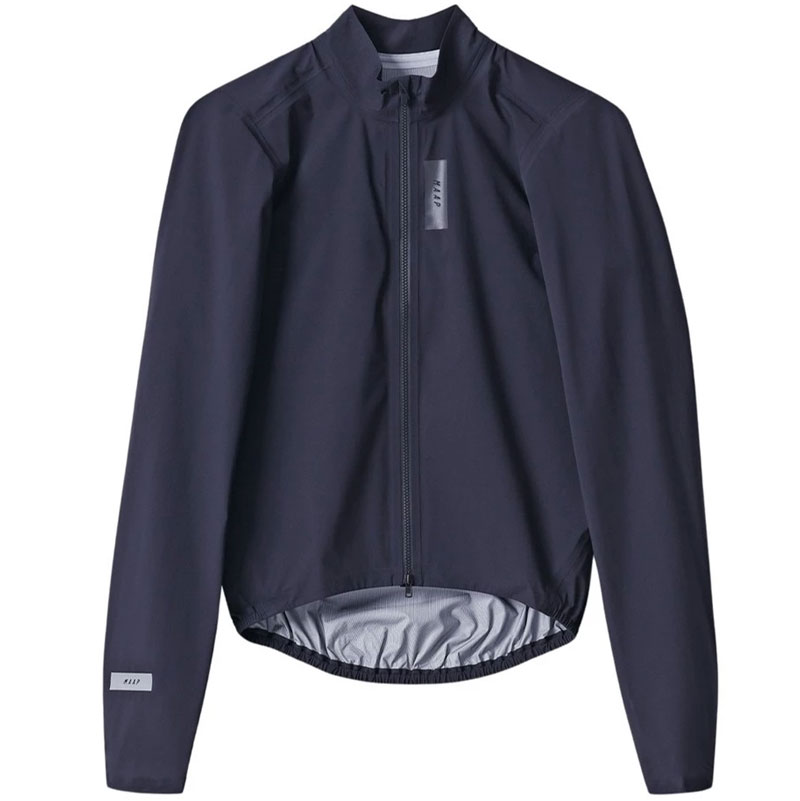
Combines superior waterproofing with a comfortable race fit. Lightweight, it comfortably stows in a jersey pocket.
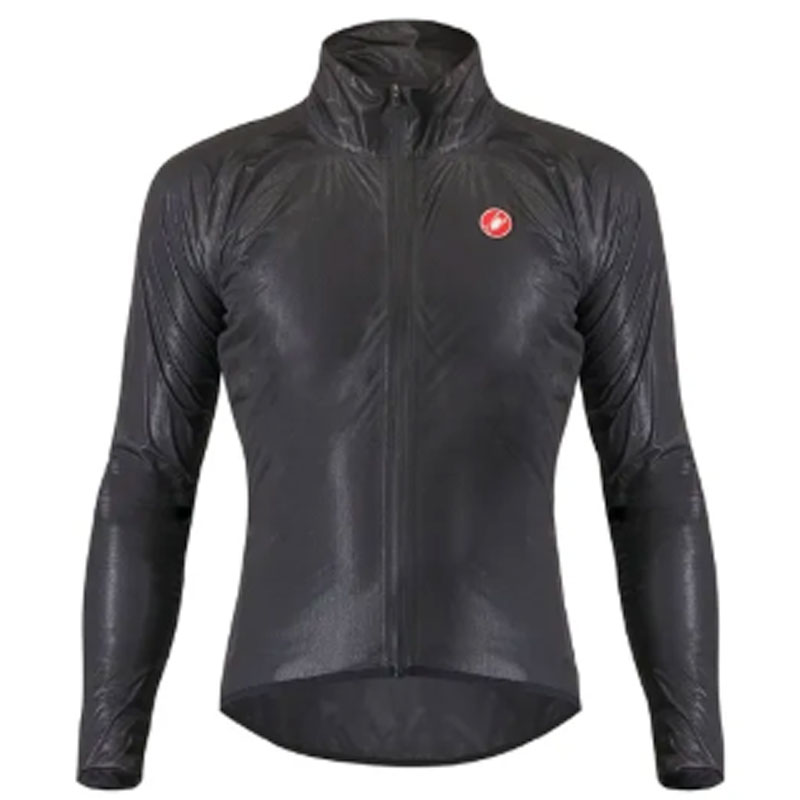
The Squall Shell is well beyond just an emergency jacket. It effectively removes any excuse for not bringing one on every ride.
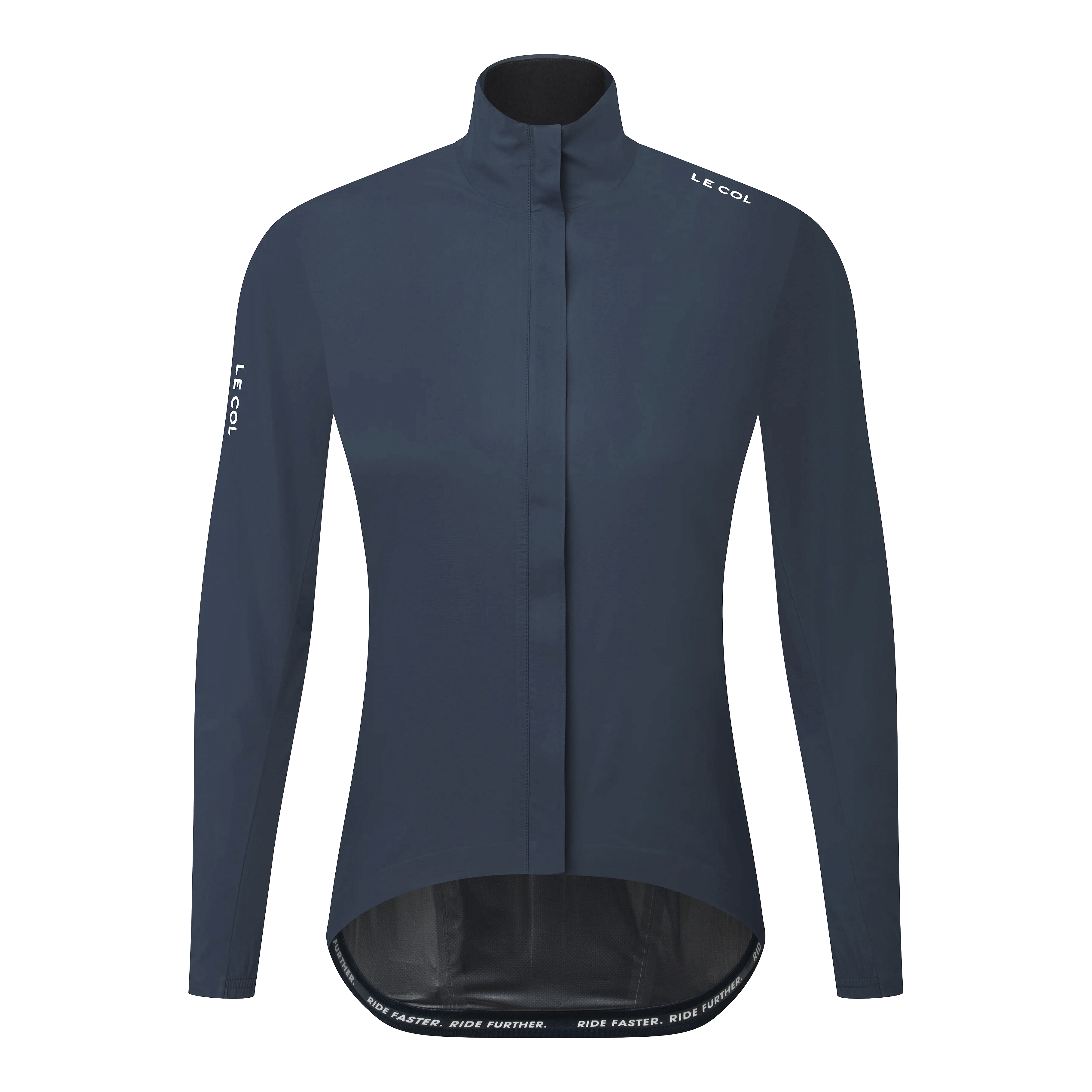
As good as the current PFC-free fabrics and jackets can get. Light, packable and reasonable value. Le Col have done an excellent job on this jacket.
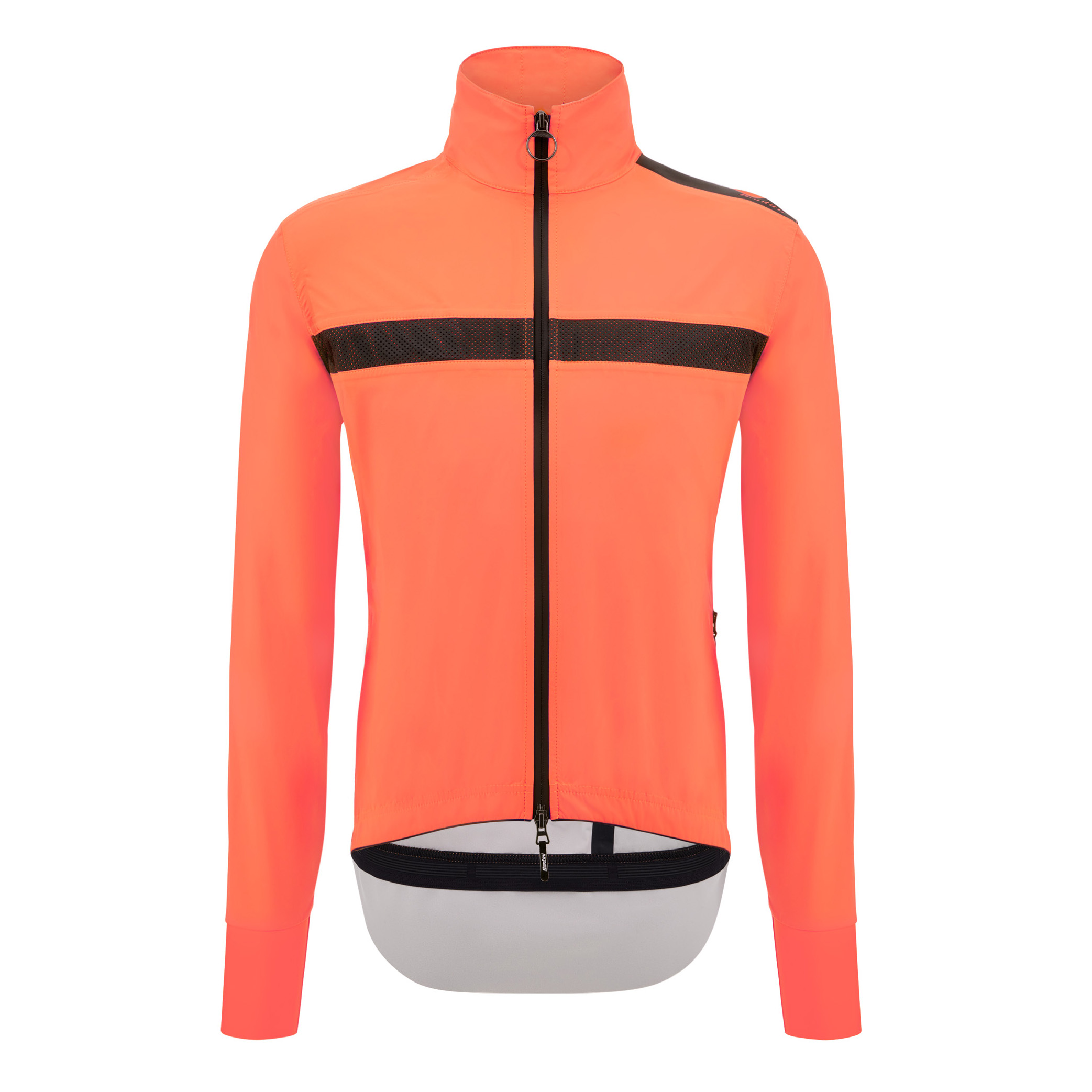
With high levels of waterproofing and breathability, this PFA-free jacket from Santini is impressive and almost took Northern England's Autumn weather in its stride.
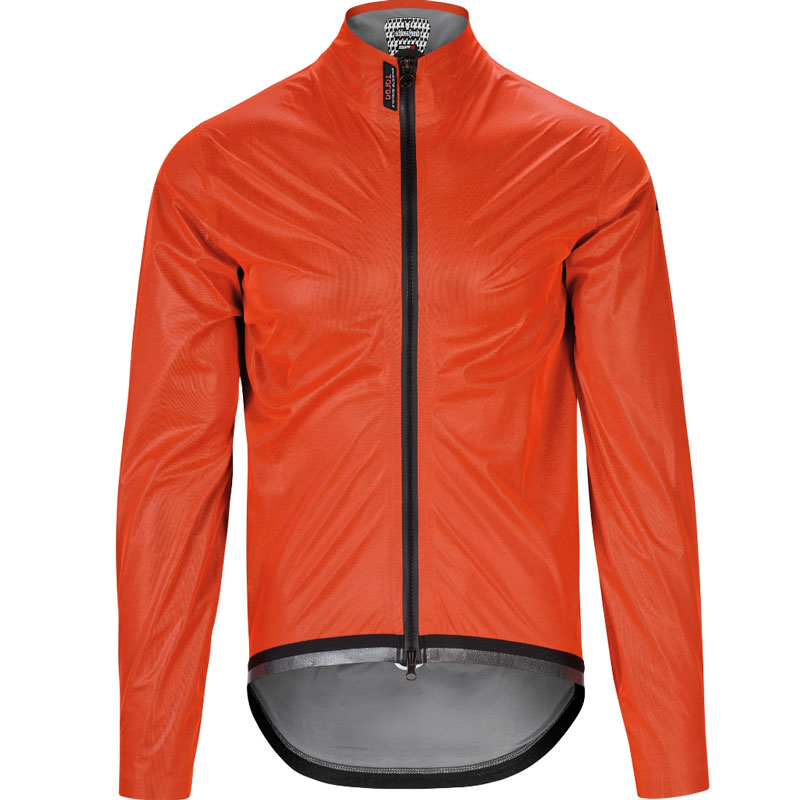
If you're looking for a jacket that combines packability with robustness, this is the model to choose.
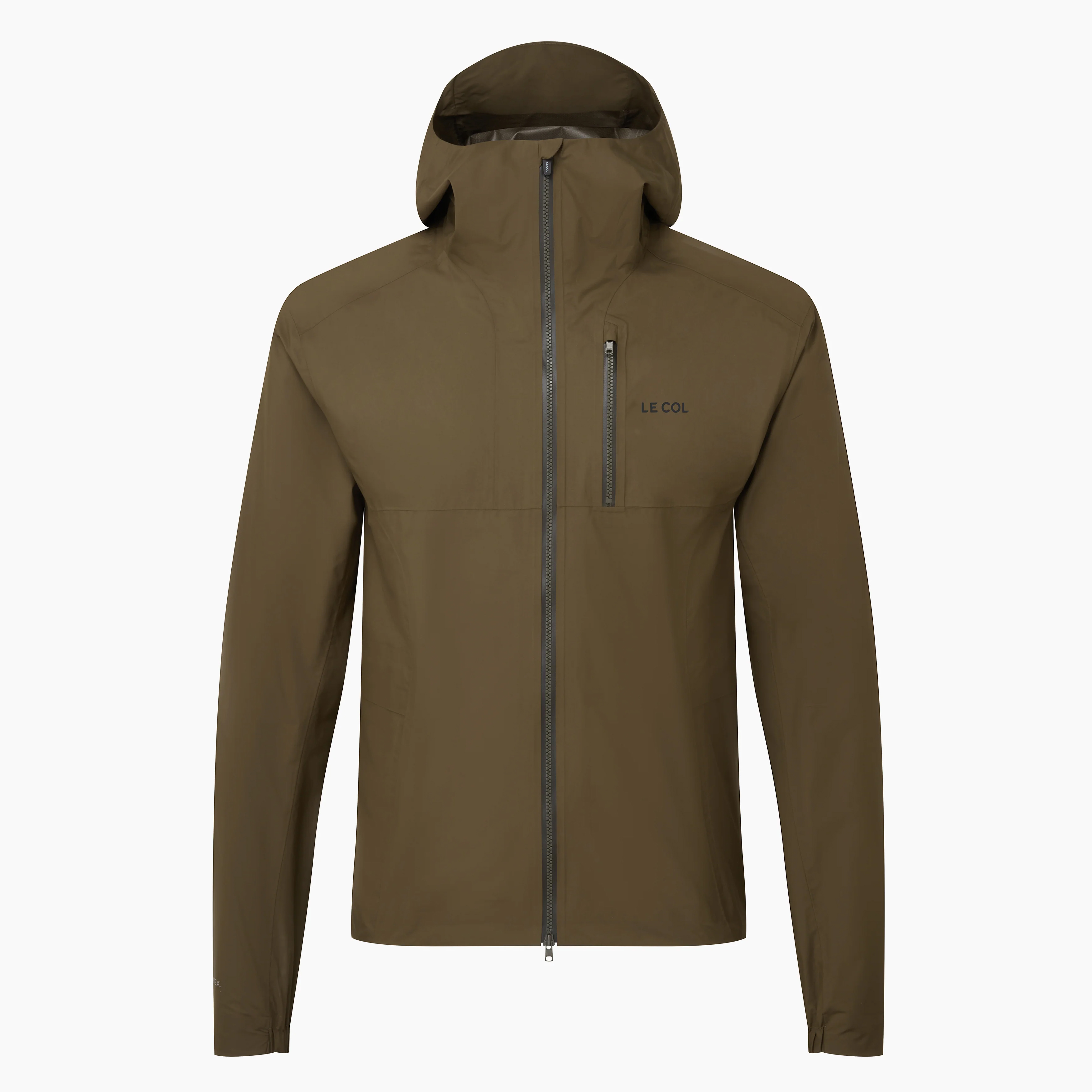
While I believe the ARC might be suitable for certain road situations, all indications suggest that this jacket is one of the best for gravel, adventure, and some commutes.
Best waterproof cycling jackets 2025
Best overall waterproof cycling jacket
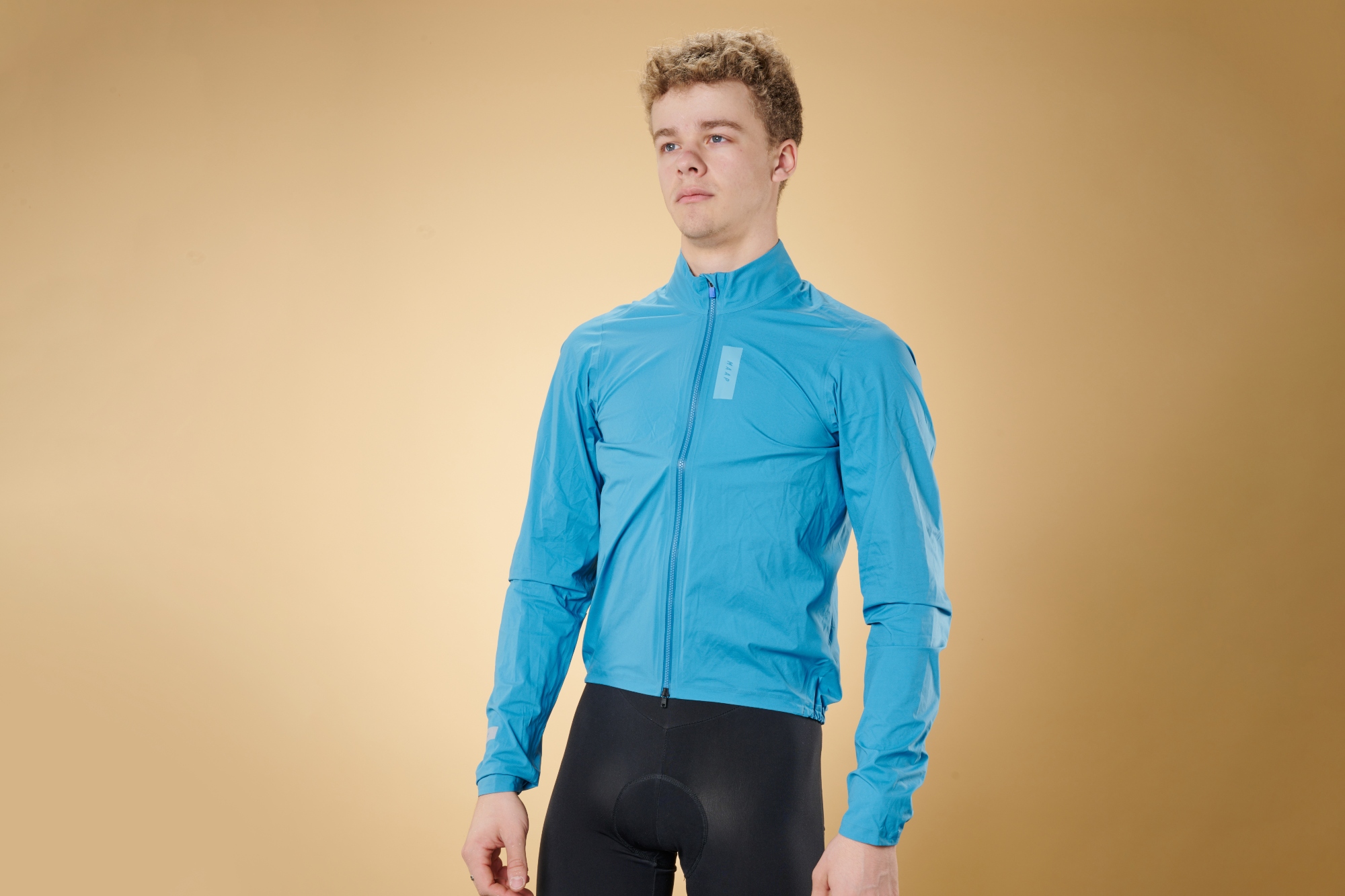
MAAP Atmos waterproof jacket
MAAP Atmos rain jacket
Our expert review:
Specifications
Reasons to buy
Reasons to avoid
The Maap Atmos Rain Jacket uses Pertex® Shield fabric (as does the Pas Normal jacket) - and it performs exceptionally well. The Atmos though, is stretchier than the Mechanism Rain Jacket and allows for much more freedom of movement on the bike.
Maap has kept the design relatively simple. Cuffs are handled with an elastic band that partially extends around each wrist - this keeps the fabric from bunching up too much, which I found to be great for comfort. The waist too features an elastic lining which keeps it tight to your body. It doesn’t offer the same level of adjustability as the jackets that feature an adjustable drawstring, but it never rode up during riding - so no worries there!
Sure enough, the brilliant blend of a comfortable, soft fabric, coupled with a great fit and quality grippers made for an awesome experience out on the bike. I found that the Atmos jacket struck the best blend of having an airy feel, whilst getting the basics right - waterproofing and comfort.
In our indoor testing, the Maap once again stole the show. It placed equal first in the seam testing, with zero water ingression over the 10 minute period. In the shower, the YKK two-way zipper was bulletproof too, resisting high-pressure water pretty much as well as Rapha’s offering.
Weight and packability are right on the money too - the jacket weighs just 125 grams and packs down to around half the size of a standard jersey pocket when wrapped tight.
It certainly isn’t cheap, and it doesn’t necessarily have the bells and whistles that some of the other jackets do when it comes to pockets. But the overall experience of the Maap Atmos jacket is outstanding.
Best value cycling rain jacket
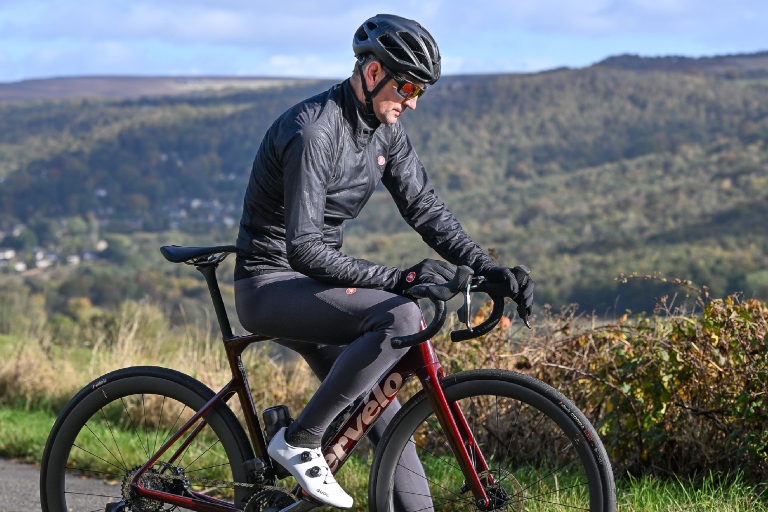
Specifications
Reasons to buy
Reasons to avoid
The Squall Shell from cycling clothing giant Castelli is undoubtedly lightweight. At just 98g for the large size I tested, it's unlikely to be a jacket that you’d be putting in hard miles on gravel or for commuting. As its name suggests, 'Shell', this is one to stash in your pocket during long road rides and use in the event of a sudden downpour.
However, don't be fooled into thinking the Squall is a one-trick pony only good in an emergency. The Squall certainly performs as well as the outgoing industry-standard shakedry technology when it comes to riding in the rain. One area that still needs improvement is breathability, as it does condensate slightly when pushed on or in high humidity, but I am nit-picking. Given the cost of the Squall compared to many of the shakedry jackets, it is certainly breathable enough for most.
For me, what sets the Squall apart from so many packable and lightweight jackets is the fit. Castelli has put an excellent cut on the Squall, and it makes such a big difference. So, often the cut of a jacket is all that differentiates one jacket from another, and Castelli nailed it. The fit works in a multitude of positions with enough stretch to allow for a low aero stance if needed. This stretch also makes it ideal for putting on over multiple layers, like a thick winter jersey.
In conclusion, the Castelli Squall Shell is much more than just another emergency packable jacket. However, it does take away any excuses for not carrying a jacket again.
- Read our full Castelli Squall Shell Jacket Review
Best Lightweight Cycling Rain Jacket
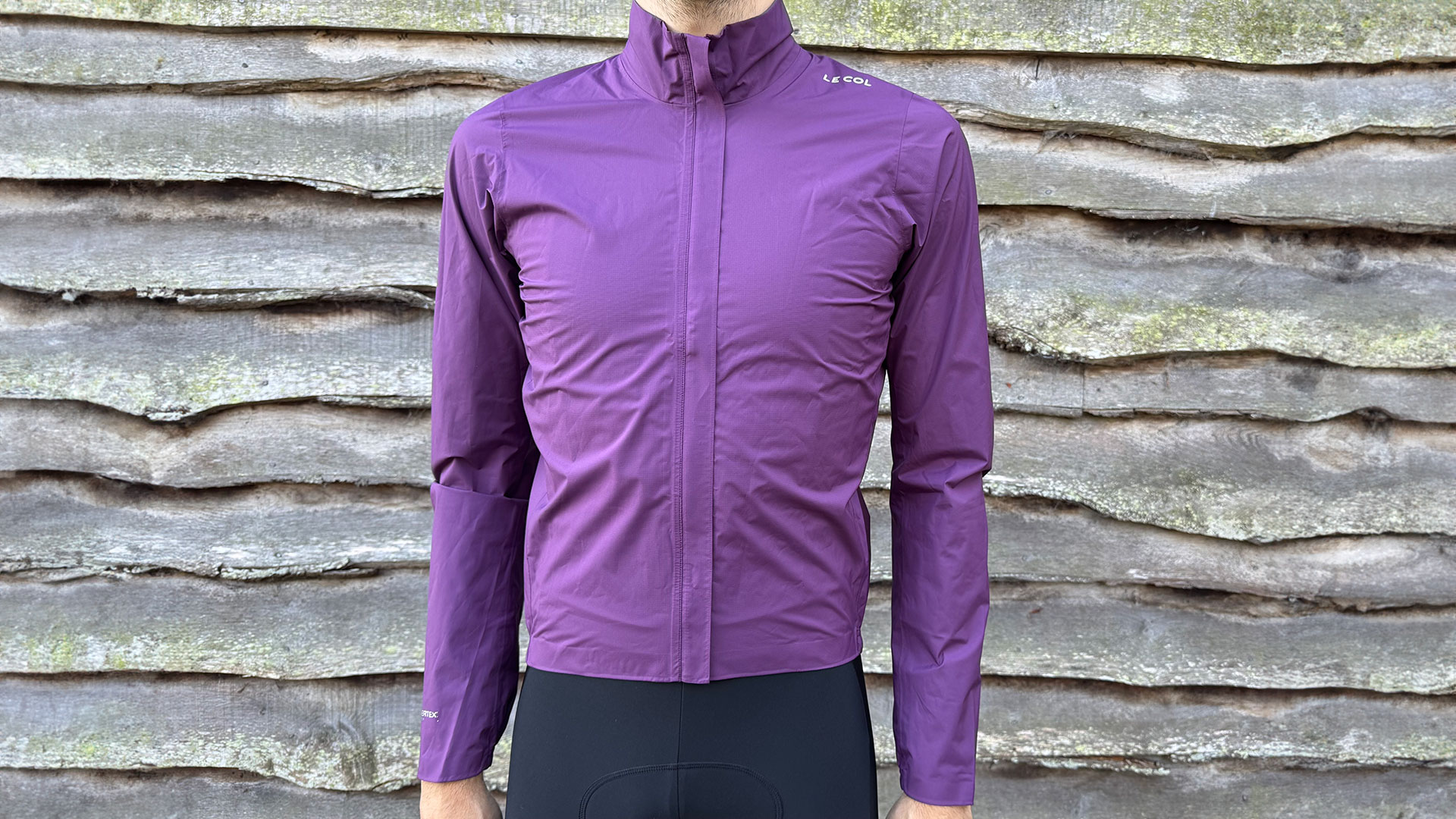
Specifications
Reasons to buy
Reasons to avoid
The Le Col Lightweight Rain Jacket is taken from their 'Pro' range of performance-oriented garments, which means that Le Col has invested time considering the garment's performance beyond its fabric and fit, including speed and aerodynamics. It is also part of the many jackets in this guide that feature new PFC-free content. Le Col has chosen to use Pertex Shield for the Pro Lightweight to enhance its waterproofing, in combination with fully taped seams.
Thanks to that very good Pertex fabric and those taped seams, the Pro Lightweight does precisely what it needs to, and that is keep you dry. The Pertex design is innovative, and while it blocks large rain droplets from getting in, it still allows smaller vapour molecules to pass through the jacket; however, it can still get a little stuffy, which is where almost all the modern, environmentally friendly fabrics have work to do over Shake-Dry. Whilst breathability is considerably better in the Pro Lightweight than other PFC-free jackets I have used, on warmer days, on slow climbs or high efforts, I wish Le Col had considered a two-way zip for the Pro Lightweight.
Otherwise, Le Col have done an excellent job on this jacket. Its packability is exceptional, fit is pretty good, although not perfect; it can be forgiven, as it is so easy to get on and off. It is also outstanding value when compared to other high-end brands like Pas, Rapha, MAAP, and POC.
- Read our full Le Col Pro Lightweight Rain Jacket review
Best for absolute protection
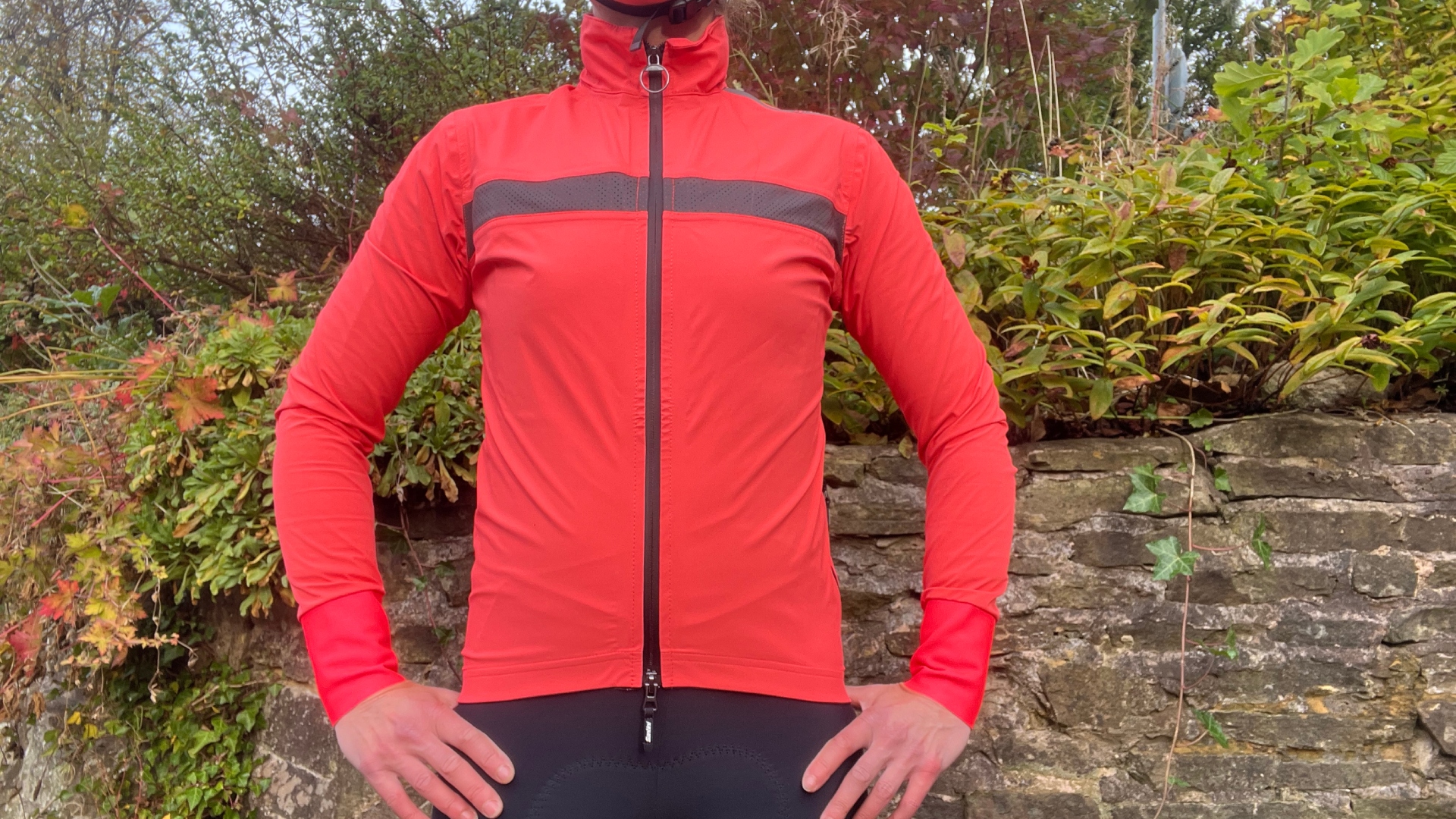
Specifications
Reasons to buy
Reasons to avoid
Santini with the Guard Neo has officially entered the PFAS-free world and taken it a step further by continuing its partnership with Polartec, which has produced a plant-based alternative to the now outlawed 'forever chemicals'. Santini says that by partnering with a smaller fabric supplier like Polartec, they have been able to be a greater part of the development of PFAS-free alternatives. The result is a fabric that is 20,000mm of water column resistance (double the industry standard) but also 99% windproof.
Autumn in the North of England tends to be a rather damp but mild affair, which isn't always best for testing the lower limits of a jacket, but it certainly tests the waterproofing. Something I am happy to say is that the Guard Neo excelled, provided I layered correctly. That is made easier thanks to Santini's softshell-like finish, and for warmer days as we hit double digits, it was fine with just a base layer.
Something that is really important to me is breathability and windproofing. Here on the outskirts of Manchester, I am either going up or down, which places quite a high demand on any jacket. Again, I can confirm the Guard again performed exceptionally well. So much so, I have found myself reaching for it even on dry days when it's just cold or windy.
A few little niggles which see it lose that half star, firstly, while it does better than most by offering a rear pocket, it feels half-cooked as I still have to store stuff in my jersey or bibs. Maybe two pockets or even just go the whole hog in a jersey-style pocket arrangement. I would also not miss the hood, and this point is subjective. I don't really like them, but so do. Given the fit and fabric of this jacket, it just doesn't fit all that well, and I don't see myself really using it, despite its practical benefits.
- Read our full Santini Guard Neos Cycling Rain Jacket Review
Best fitting cycling rain jacket
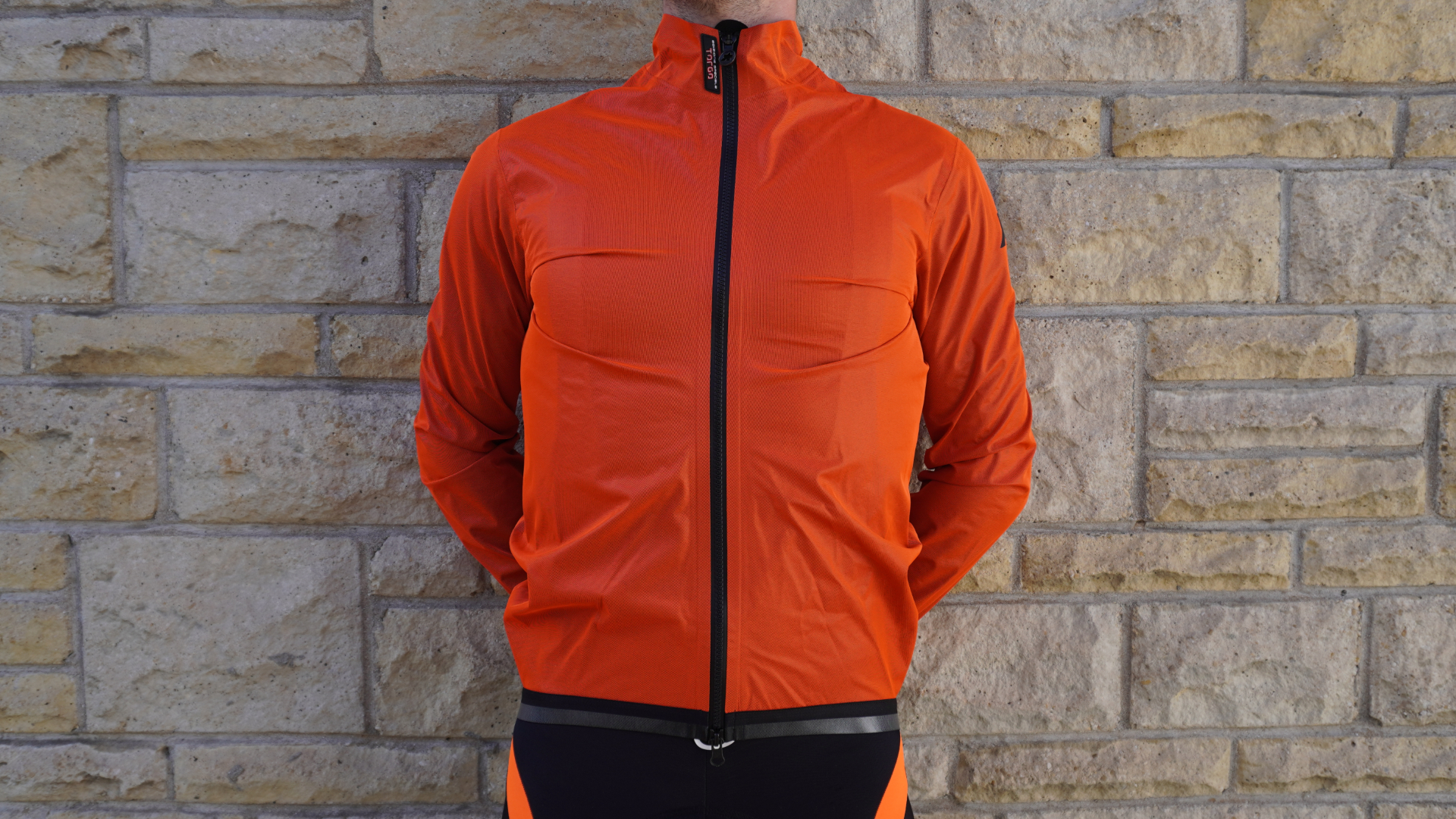
The Equipe RS rain jacket uses a softshell fabric for a blend of protection and breathability
Specifications
Reasons to buy
Reasons to avoid
Made from a softshell, Schloss Tex fabric, designed specifically for the Equip RS, the jacket is waterproof as you can get, but also breathable. The hydrophobic membrane is DWR coated, seams are taped and its race-cut design helps keep most of the water out, although the stretch wrist band did let it down when not orientated directly out of rain spray when we tested it.
It's not quite as compact as some of the others on this list, but this Swiss jacket will easily stuff into a pocket and the high viz colour options get the thumbs up from us as one of our favourite waterproof jackets.
- Read our full Assos Equipe RS Rain Jacket Targa review
Best relaxed fit cycling rain jacket
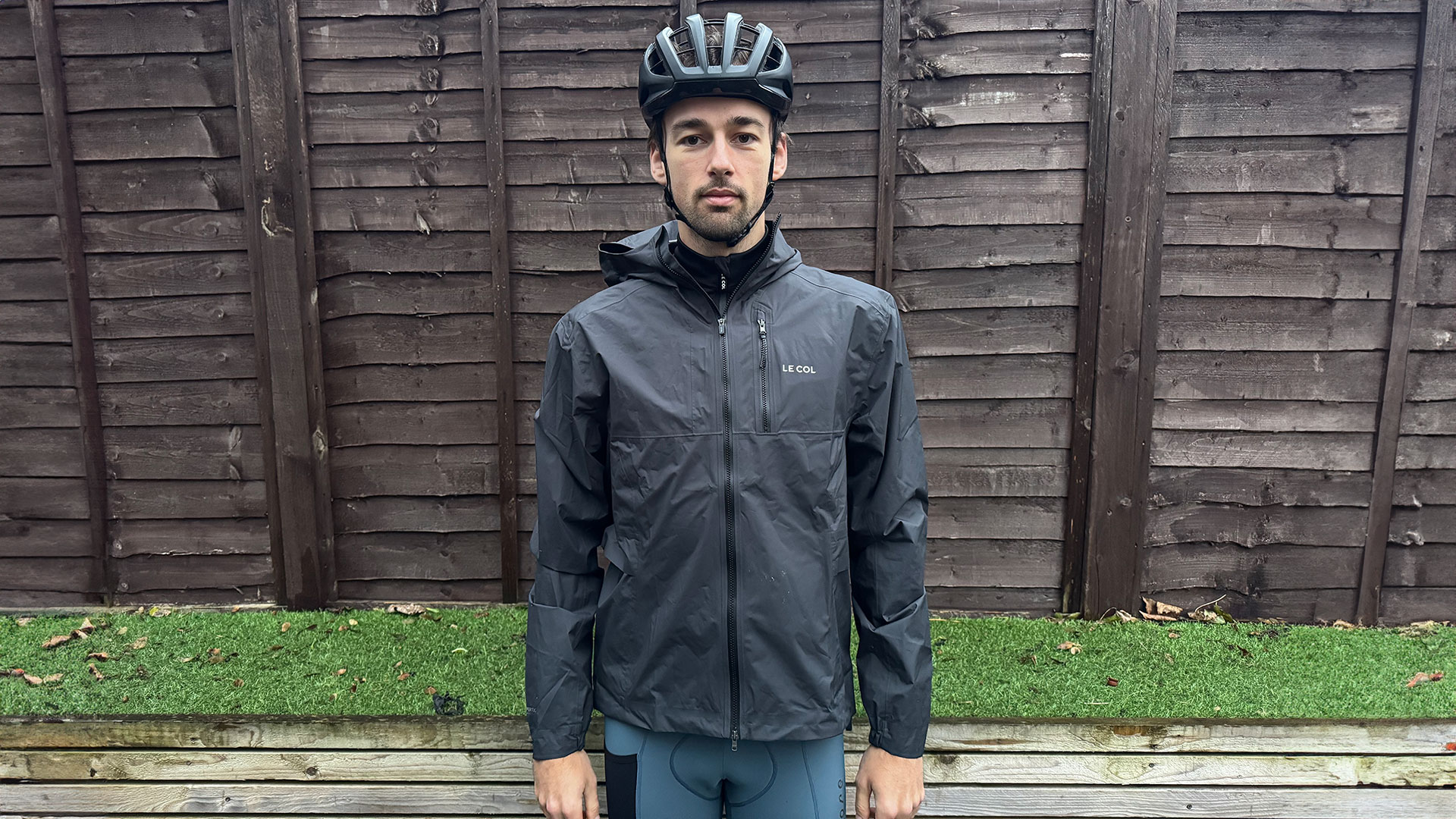
Specifications
Reasons to buy
Reasons to avoid
Le Col, in light of ever-increasing bans on the use of PFC waterproofing materials, has chosen to use a PFC-free Pertex® Shield weatherproof technology for its ARC jacket. It is being increasingly used as an environmentally friendly alternative to Shakedry, and in my experience, it is just as good. This is combined with taped seams, which should offer excellent water and windproofing. As the ARC features a slightly more relaxed fit, Le Col has also paired the jacket with a hood, adjustable cuffs and hem.
The ARC is not a jacket I would normally reach for, given its slightly more relaxed fit; however, I was surprised by its performance, versatility and protection. During testing, I was even hit with a few very cold and snowy days, which the ARC took in its stride. This is in part due to the Pertex technology, but also the features Le Col has chosen to equip the ARC with. Notably, the hood is not a feature I would generally look for in a jacket, mainly because they rarely feature on more form-fitting jackets. However, I was really impressed with how well it worked; it stayed in place nicely, and the increased protection was very welcome on those cold days.
While I think the ARC could work in some road scenarios, everything about this jacket suggests it's ideal for gravel, adventure, and commuter cycling. Its durable fabric, hood, and two-way zip are brilliant features, but the added weight, while still very packable, is a bit much for those looking to ride as fast as possible in damp conditions. This is by no means a criticism; the ARC is exceptionally comfortable, and I am really impressed by its performance; it is perfectly designed for its intended use.
- Read out full Le Col ARC Lightweight Rain Jacket review
How we test
When testing rain jackets we naturally place great importance on their ability to keep you dry. As well as riding them outside in the wet, we also tested some of these jackets indoors, isolating both the seams and the zips.
This was done by placing a water column over the shoulder junction of each jacket and letting them sit for 10 minutes on top of a piece of kitchen roll. This allowed us to gain a visual representation of how much water penetrated the jackets relative to each other.
The same for the zippers - we tested each of the jackets in the shower, on top of a white t-shirt, to see which could withstand a large amount of water.
This helped prove that you perhaps shouldn't buy a rain jacket solely on its waterproof rating. Our seam testing shows how manufacturing processes and quality control can seriously affect the performance of a jacket, particularly over longer rides in the rain. Zippers too make a huge difference. Although the zip won’t take the full brunt of the rain in a normal riding position, the spray from your front wheel, or even water ingress over time can often lead to your core getting soggy - and that’s how you get cold.
Alongside this testing, we also paid close attention to the fit and the functionality of each jacket.
More on our testing protocols.
How to choose a waterproof cycling jacket
What are the key elements to a waterproof cycling jacket?
Key elements to look for in a waterproof jacket are waterproofing, breathability, fit and packability. The best waterproof cycling jacket for you will perfectly match your priorities for your style of bike riding. We’ve got in-depth details of all these features below – but as a quick summary:
Waterproofing: There’s a big difference between waterproof and water-resistant. Waterproof will normally come with a claimed waterproof rating of at least 10,000mm, be multilayered fabric with a perforated membrane, have taped seams and storm-proof zips. Water-resistant will usually have a Durable Water Resistant (DWR) coating and be lightweight, making it more packable.
Breathability: It’s a tricky balance between staying dry from rain and staying dry from sweat. Breathability can also be rated and claimed ratings of above 10,000g will help prevent you from boiling on the inside. Generally speaking, the more waterproof a fabric is, the less breathable it becomes, although there are some expensive exceptions to the rule. Jacket design often takes account of breathability with the inclusion of more breathable fabrics under the arms, or additional ventilation.
Fit: It’s horses for courses, or in this case: jackets for jockeys. Fast riding or racing will require a tight-fitting rain cape, which minimises fabric flap to maintain your aero performance, while slower all-day affairs may be more comfortable with a looser fit for layering up underneath. Other fit details, such as a long tail to keep your backside dry or thumb loops will appeal to some, but not others.
Packability: If conditions are changeable, then it’s likely you’ll want to be able to stow the jacket in a rear pocket. Waterproof jackets tend to be heavier and bulkier, and don’t often pack down small enough for a rear pocket, while water-resistant options can usually be scrunched into a ball the size of a fist, but the technology has come a long way since the original Gore-Tex days. Take a look at our guide to the best packable rain jackets if that's better suited to your needs.
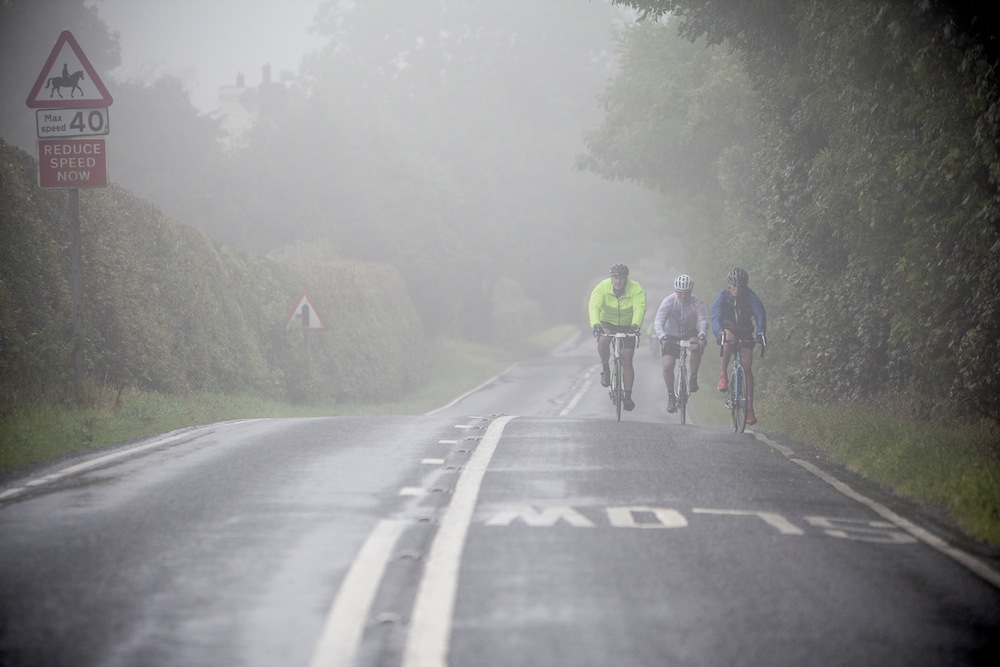
With a good jacket, riding in the rain can be fun
What fit should I get?
As with any piece of cycling clothing, making sure your waterproof cycling jacket fits properly is a crucial part of the equation. However, it's not a case of one size fits all, with different cuts being better suited to different types of riding and riders.
If you're using a waterproof jacket for fast rides, such as heading out for the local chain gang regardless of the weather, then you're going to want a relatively slim-fitting jacket which won't flap too much in the wind or descending, holding you back with its poor aerodynamic performance. However, you don't want it to be too tight, just in case you want to add extra layers underneath in really cold weather.
For everyone else, a slightly looser fit might be more suitable, giving the possibility for bulkier layers underneath and possibly greater comfort too, especially if you're looking for the best commuter cycling jacket and need to fit non-bike wear underneath. If you're riding in cold conditions, then check out our guide to the best winter cycling jackets, which often incorporate some water resistance as well as insulation.
That said, watch for a loose-fitting collar and cuffs that could also undermine an otherwise very waterproof cycling jacket, acting like a bucket for rain beading off your helmet or sleeves.
FAQs
How do I keep my jacket waterproof?
Even the best waterproof cycling jackets will tend to become less effective over time, with reduced waterproofing and/or breathability. That's due to a combination of the build-up of dirt on the outer surface and oil residues from sweat on the inside, as well as the loss of the outer DWR layer.
It's important to wash your waterproof jacket correctly to retain or restore breathability; take a look at our pieces on how to wash a waterproof jacket and the best products to use to learn how.
What do cyclists wear in the rain?
Clearly the most important thing you want to know about any waterproof cycling jacket is how waterproof it is. There are plenty of jackets out there that claim to be "water-resistant" (usually meaning that they have a Durable Water Resistant (DWR) coating applied to the fabric), but these will only keep you dry through showers and relatively light rain. If you want a proper waterproof cycling jacket for real wet weather riding, then you're going to want something with a little more protection.
The good news is you can get some idea of how waterproof a jacket is by doing a bit of research into any prospective purchase, with an increasing number of manufacturers stating the waterproof rating of their waterproof cycling jackets.
"But what's a waterproof rating!?" we hear you cry. Well, it's basically a number, and the higher the better. The number is calculated on the basis that if you put a 1cm x 1cm square tube over the fabric, how high could you fill the tube with water before it starts to leak through?
For the best waterproof cycling jacket, you're going to want something with a waterproof rating north of 10,000mm, although there are a number of jackets on the market that claim to offer more than this. However, "claim" is the keyword in this sentence, with no central body set up to test these figures, and manufacturers generally doing the testing of their own products.
It's also not all about the fabric when it comes to making a waterproof cycling jacket waterproof, with other features playing an important role. Most crucial of all is the seams. You can make a waterproof jacket out of the most waterproof material in the world, but if you then stitch a load of tiny holes in it, it's not going to do its job very well.
The solution to this is taping the seams, a process which covers the seams with a waterproof material, helping to keep the water out. All of the best waterproof cycling jackets will have this feature, although some will only have taped seams in crucial areas such as the shoulders and back, rather than across the whole jacket.
The other area where water is likely to get in is through the zip. This is particularly the case if you're riding in the wet in a group, where water is constantly being sprayed up onto your chest by the back wheel of the rider in front. Unsurprisingly the solution is a waterproof zip, which has tightly meshing teeth. It may have a storm flap either on the outside or on the inside too.
Take a look at our 11 tips for riding in the rain and our advice on how to dress for wet weather cycling to improve your wet-weather riding experience.
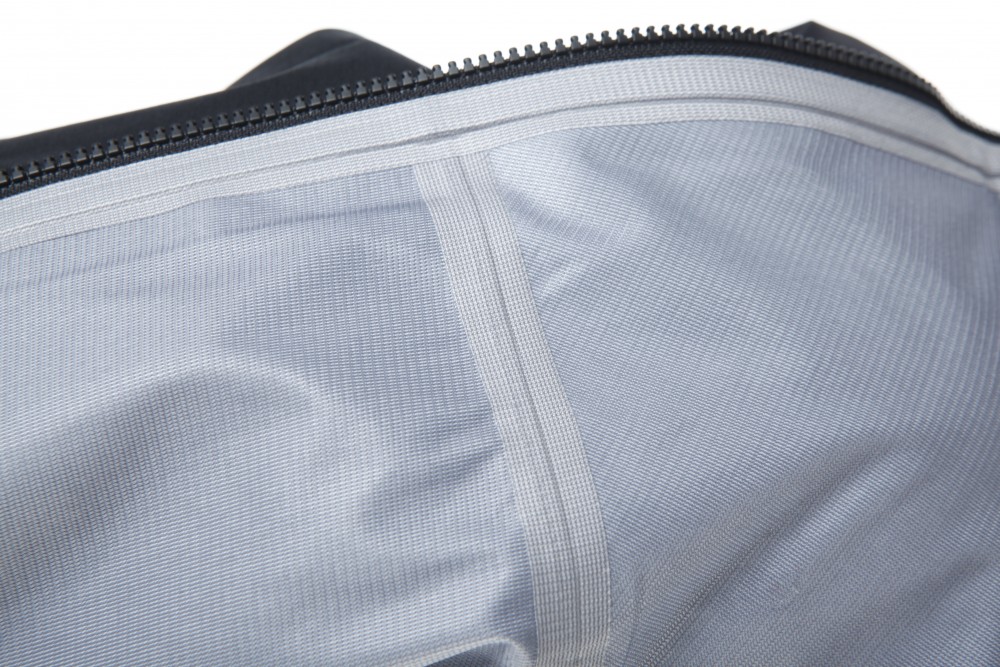
Taped seams will help with waterproofing
How is breathability measured?
For all that, probably the major factor that distinguishes a good waterproof cycling jacket from a bad one (or at least a great one from a good one) is breathability. If you're working hard (as we hope you are!) then you're going to be building up quite a lot of heat inside the jacket, so a good degree of breathability will allow sweat to escape.
As with waterproofing, it's possible to put a number to breathability, and again it's a case of the higher the better. In this case, the number refers to the weight (in grams) of water vapour that can pass through a 1m x 1m area of fabric over a 24 hour period. So if you have a jacket with a 20,000 breathability rating, 20,000g of water vapour can escape through the fabric in 24 hours.
Again, for the best waterproof cycling jacket, you're going to want that number to be more than 10,000 (g), but as with the waterproof rating, you should always be a sceptic, with manufacturers carrying out all the testing rather than an independent body, and the testing for the fabric only.
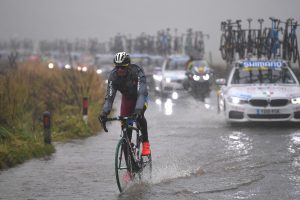
Does a waterproof jacket need to be packable?
If you're riding in changeable conditions, then packability is an important thing to look for in a new waterproof cycling jacket. If the sun comes out after it's chucked it down for the first two hours of your ride, then you're going to want something that will stuff down small enough to fit in a rear pocket. Don't forget you'll also be packing spares and ride snacks - so make sure you have space for it if you are starting out your ride with it on.
However, in general, waterproof cycling jackets that offer good waterproof protection are fairly bulky, so the majority will not pack down that small. Although new technology is making smaller jackets ever more waterproof it should come as no surprise that if you want a jacket that will both keep you dry in heavy, persistent rain and will pack down small enough to fit into a jersey pocket, you'll pay dearly for it.
Other fit details such as thumb loops are probably the most common extra feature found on many waterproof cycling jackets. These are designed to stop the sleeves from riding up, creating a gap between the cuffs of the jacket and your gloves, but are a love or hate feature, as some riders find this interferes with radial grip.
To keep your derriere dry from wheel spray it's also worth looking for a waterproof cycling jacket with a drop tail (or bumflap). However this isn't a case of manufacturers just adding an extra bit of material at the bottom of their jacket, and it'll need to have some silicone grippers or other devices to prevent it from riding up. It's also worth considering fitting mudguards for when the temperature drops, as rain in the cold is far worse than a summer shower. Fenders will keep the majority of spray off your backside, but consider fitting extra long ones to be courteous to riders behind.
If you're on a long ride, then you're also likely to need to access the rear pockets of your jersey in order to get at any energy bars or gels you might have stashed in there. With this in mind, many waterproof cycling jackets will have some sort of opening at the rear. If yours doesn't then it's easy enough just to lift up the tail of the jacket to access your pockets that way.
Finally, it's also worth looking for a waterproof cycling jacket that has some sort of soft fabric on the insides of the cuffs and collar. This will really help with comfort, feeling much nicer against the skin than the cold, crunchy material found on the inside of most waterproof cycling jackets.
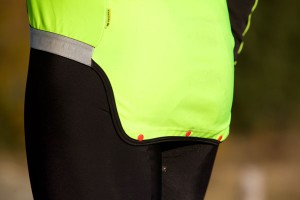
Some jackets have an extended bum flap to protect from spray
How much should I pay?
With the advent of new fabric technologies and new manufacturing techniques, wet-weather bike gear has come on leaps and bounds over the past few years, making the best waterproof cycling jacket a must-have piece of kit for any rider.
The sky really is the limit when it comes to buying a waterproof cycling jacket, with some options from certain premium brands nudging north of £300 /$400. However, the good news is that you don't need to spend nearly that much to get a great jacket for you.
In general, however, you really do get what you pay for in rainwear, as ticking all the boxes of breathability, fit, size and waterproofing means some serious technology.
If you're looking just to keep the worst of the weather out while not going flat out, then breathability isn't a massive issue (for example, if you're just using the jacket for commuting to and from work) and you are willing to do a bit of shopping around, then you can easily pick up a really good waterproof cycling jacket that will keep you nice and dry for less than £50/ $50.
For something that will offer better breathability, more features, and probably a closer fit, then you are going to have to spend a little more money. You don't need to get the market leader, but expect to spend somewhere between £100-£150 / $120-$200 price range, as this will offer a whole host of options without getting you in too much trouble with your bank manager.
The latest race content, interviews, features, reviews and expert buying guides, direct to your inbox!
Hannah is Cycling Weekly’s longest-serving tech writer, having started with the magazine back in 2011. She has covered all things technical for both print and digital over multiple seasons representing CW at spring Classics, and Grand Tours and all races in between.
Hannah was a successful road and track racer herself, competing in UCI races all over Europe as well as in China, Pakistan and New Zealand.
For fun, she's ridden LEJOG unaided, a lap of Majorca in a day, won a 24-hour mountain bike race and tackled famous mountain passes in the French Alps, Pyrenees, Dolomites and Himalayas.
She lives just outside the Peak District National Park near Manchester UK with her partner, daughter and a small but beautifully formed bike collection.
- Matt Ischt-BarnardEcomm and Tech Writer
- Tim Russon
